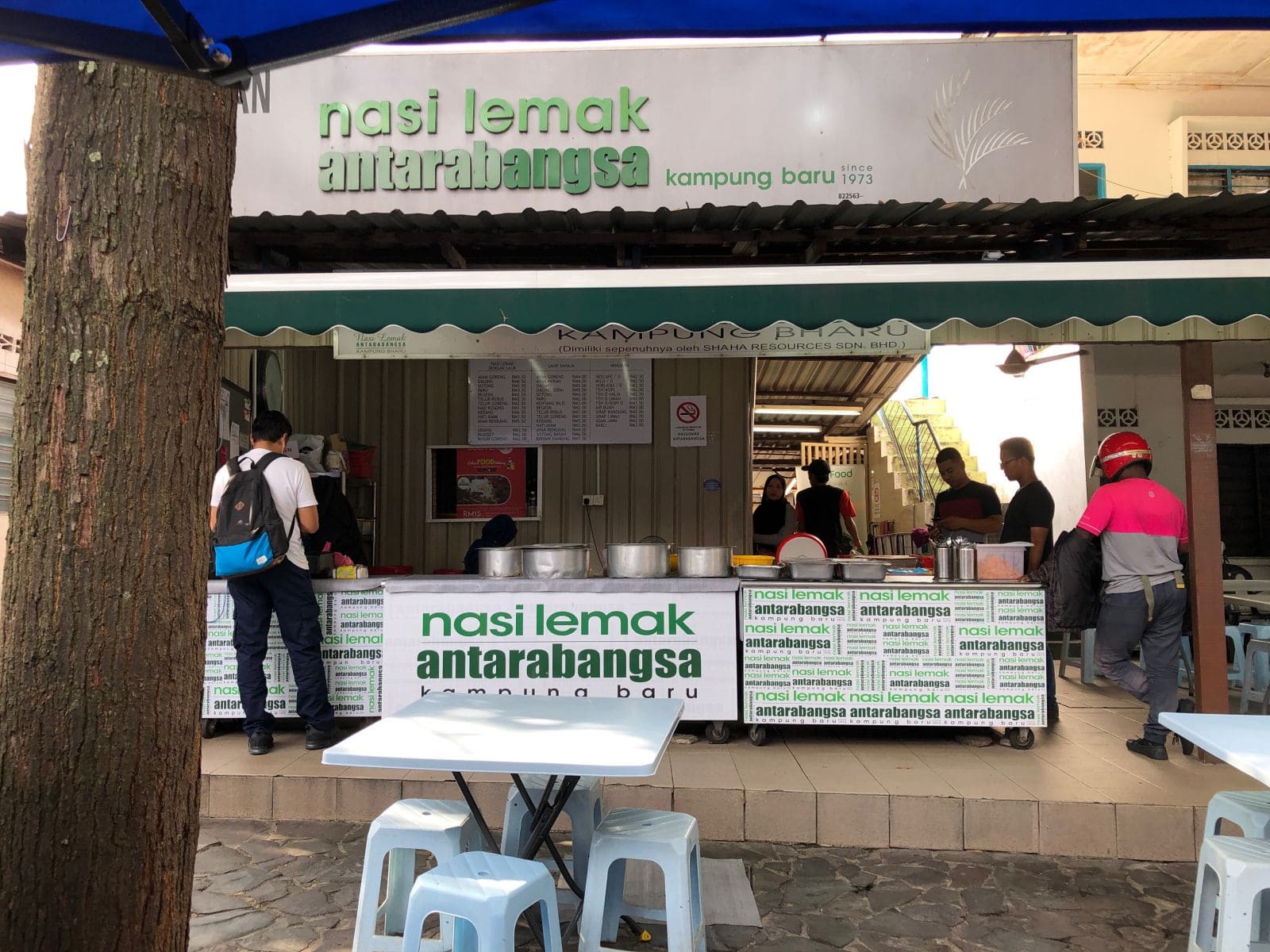Kampong Bharu, Kampung Baru or even Kampung Baharu (as DBP, the National Language Institute has deemed it should be spelt), is a 223-odd acre parcel of land in the heart of Kuala Lumpur. With the Klang River as a boundary and the majestic Twin Towers nearby, it is unique as it still retains its traditional roots.
13 intrepid Ennakers with our wonderful guide Nadge Ariffin met at 3.30 in the afternoon on Thursday the 9th of May. Nadge, to start off, gave us a bit of the history of the area, explaining in 1900 Kampong Bharu was decreed as a Malay agricultural settlement solely for agricultural food supply purposes. Kuala Lumpur at that time was developing quite rapidly, Tin prospecting was big business and many immigrants were moving in, and due to this the Malay farmers were being pushed out.
Therefore, Malay farmers were invited to Kampong Bharu and each family was given a plot of land from 1/4 acre up to an acre in size, for the sole purpose of growing food that would feed the growing city and its tin prospectors. They were initially given permission to build only 1 house on their plot regardless of the size of the land. At first paddy was the crop of choice however due to the frequent flooding of the river this changed. Over time it became a bastion of traditional life as the city grew. With the advent of electricity & transportation the farming requirement became obsolete and the place just became a denser kampung or village!
Today modern development hasn’t spared Kampong Bharu and you do see some new or very tall modern condominiums or hotels. However as the original plots were subdivided over time, it is a nightmare to sell the land as all heirs must sign. Today Nadge mentioned, the 6th generation has been born into Kampong Bharu.
We started our walk at the LRT station and soon found ourselves at a traditional Malay house that was on stilts. This was built in the 1920s. Looking at the house style you could tell the original inhabitants came from Melaka. The house has some distinctive features, especially the roof which has a long high ridge and two lower angled side roofs, with a verandah on one of the sides. It has an open flared staircase with a small porch too. Unfortunately, it was in quite a dilapidated state, although the owners are certainly not poor.
Continuing down the road we came to another traditional home. This one was in very good condition and from its features you could tell it was of Perak style. The timber though has been replaced in many parts. With this home, you could clearly distinguish that there were two distinctive parts to the house. Rumah Ibu (mother house) and Rumah Dapur (kitchen house) which was a separate structure and traditionally built 3 steps lower. This was very sensible as in the advent of a fire, the kitchen structure could be broken away, saving the main house.

We then continued our walk passing the very famous Nasi Lemak Antarabangsa stall - This has a quirky story - apparently, a single mother started the stall. Her Nasi Lemak was so very good that the pilots and flight attendants that lived in the area started to carry the Nasi Lemak to the various destinations they were flying to. Hence the name - Nasi Lemak Antarabangsa (International).
The mosque distributes a unique local rice porridge called Bubur Lambuk- which loosely translates to ‘mass rice porridge’. It is said a group of 9 Kampong Bharu residents decided to cook the porridge in the kitchen at the mosque and donate it to anyone who wanted some. It is originally cooked in 9 huge pots and only 9 residents have access to the recipe at any one time. It uses a combo of 9 herbs and spices and the recipe is a guarded secret. These days at least 4000 packets are distributed daily after the Assar prayer with many hundreds queueing up. However, ‘reverse-engineered’ Bubur Lambuk are available for sale.
We were finally at the Ramadan market which is along Jalan Raja Alang. The road has been closed off to vehicular traffic during the month of Ramadhan. Both sides of the street have food vendors that had wonderful smells emanating. There were many varieties of local food and drink available with most people buying meals for breaking of their fast. We all strolled along at our own pace with everyone of us buying something delicious to take away.


All in all, a wonderful afternoon exploring Kampong Bharu and the Ramadhan market. A big thanks to Nadge for so tirelessly answering all our questions and taking us around in the heat even though he was fasting. And of course, to Rosemary for organising this special afternoon.
Review by Nisha Dobberstein
Photos by Rosemary Chin & Michelle Pease
Drawings by Hau Young
